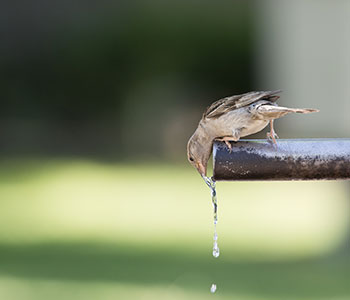
About our indirect water consumption through consumer goods
Approaching the oversized topic of water is a challenge. Where to start and how to narrow it down? An excessive demand! And yet a concern in times of increasing water shortages. Now the fine Austrian monthly magazine Datum came to my rescue with its focus on "Wasser unser" (Water Ours). This is about the invisible litres of our water consumption, elsewhere also referred to as indirect water consumption.
Datum. Seiten der Zeit 07–08/22. Seite 34–35.
July 2022
Some of you may remember, sometime in the 1970s, water was scarce. Sprinkling the lawn, washing the car and filling the pool were forbidden. The rare water had to be saved for agriculture and consumption at home. At present, Italy, Portugal and Spain are suffering from a threatening drought. It has long been said that water would one day become the number one driver of war. For there is always the same amount of water in the world, as if in a closed cycle. It is just distributed differently due to climate change. Or one takes it away from the other. And once it is lost to us - through pollution - it often stays that way. It is mainly polluted by industries, especially by the textile industry. Every one of us is familiar with the images of chemically contaminated steaming rivers. There is no product in which water does not flow, for production, cooling or cleaning. Countless litres that we are not aware of. It is the indirect water consumption that goes into goods. The magazine Datum has thankfully dedicated itself to this topic.
On the website waterfootprint.org, which is also recommendable in terms of content, you can calculate your water footprint. The extended calculator gave me an annual consumption of 1,022 m3 . That is 1,022,000 litres or 4 million glasses of water per year. Quite a lot! But that still puts me below the annual Austrian average, which is 4,400 litres a day and 1,606,000 a year, and rising. This amount is made up of actual consumption and the water that goes into the production of our goods.
Water is divided into three categories: green, blue and grey. The primary category is rainwater, which is stored in the soil and feeds rivers and lakes. The higher its share in a product, the better the water balance. Blue water comes from surface waters or groundwater and is used in industry and for artificial irrigation. If water from industry is so polluted by chemicals, for example, that it can no longer be used, it is referred to as grey.
What do we see now with the water consumption of our everyday life? The exact quantities of the items shown can be found in the Datum article.
Daily water demand: 22 % consumption, 3 % household use, 75 % food.
Types of water in the diet on a Saturday: 88 % green water, 6 % blue water, 6 % grey water
Breakfast: 902 litres
→ Coffee with milk: 209,4 L
→ Apple: 42,4 L
→ Egg 196: L
→ Bread with butter and cheese: 455,6 L
Lunch: 3.190 lites
→ Potatoe salad: 103,4 L
→ Schnitzel: 2.567,9 L
→ Small beer: 88,8 L
→ Chocolate: 429,9 L
Dinner: 596 litres
→ Spaghetti Napoli (tomatoes, onion, cheese, oil): 463,3 L
→ Red wine: 130,8 L*
That's a huge amount of water, and that's not even counting our clothes, electronic devices, furniture and so on. A look at this should raise our awareness. What we do with it is up to each of us. It is also advisable to take a look at the total footprint we leave behind every year. There are different approaches and calculation methods for this. I recommend this one: fussabdrucksrechner.at. According to this, I consume 17.5 times the area that a person in my country is entitled to each year. I consume 0.8 times the area that a person in Austria consumes on average. Just to think about it.
* As with all data, a look behind the scenes would be needed. Is it a product from organic farming or an industrial mass product? Because an organic egg from a free-range chicken in a water-rich region will have a different water pressure than an industrially produced one in a hot region, for which buildings, cooling technology, sewage disposal, medicine, etc. are necessary. Or the red wine with this high water consumption per glass (0.125 l) probably comes from a hot country with high irrigation needs rather than from a cool climate.




